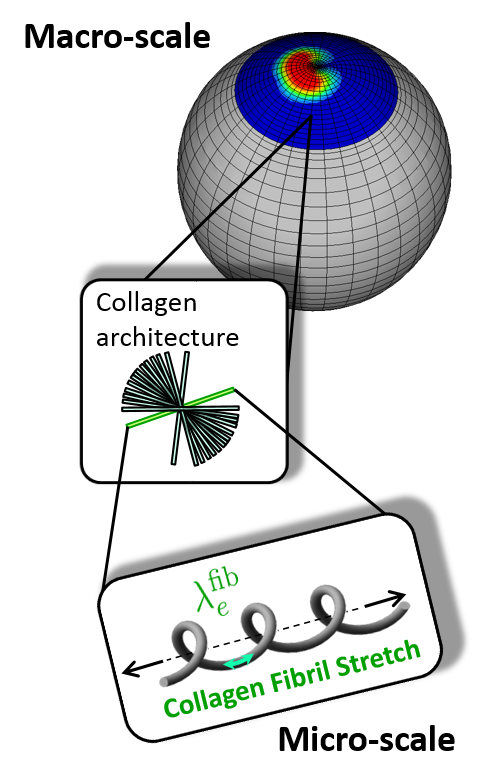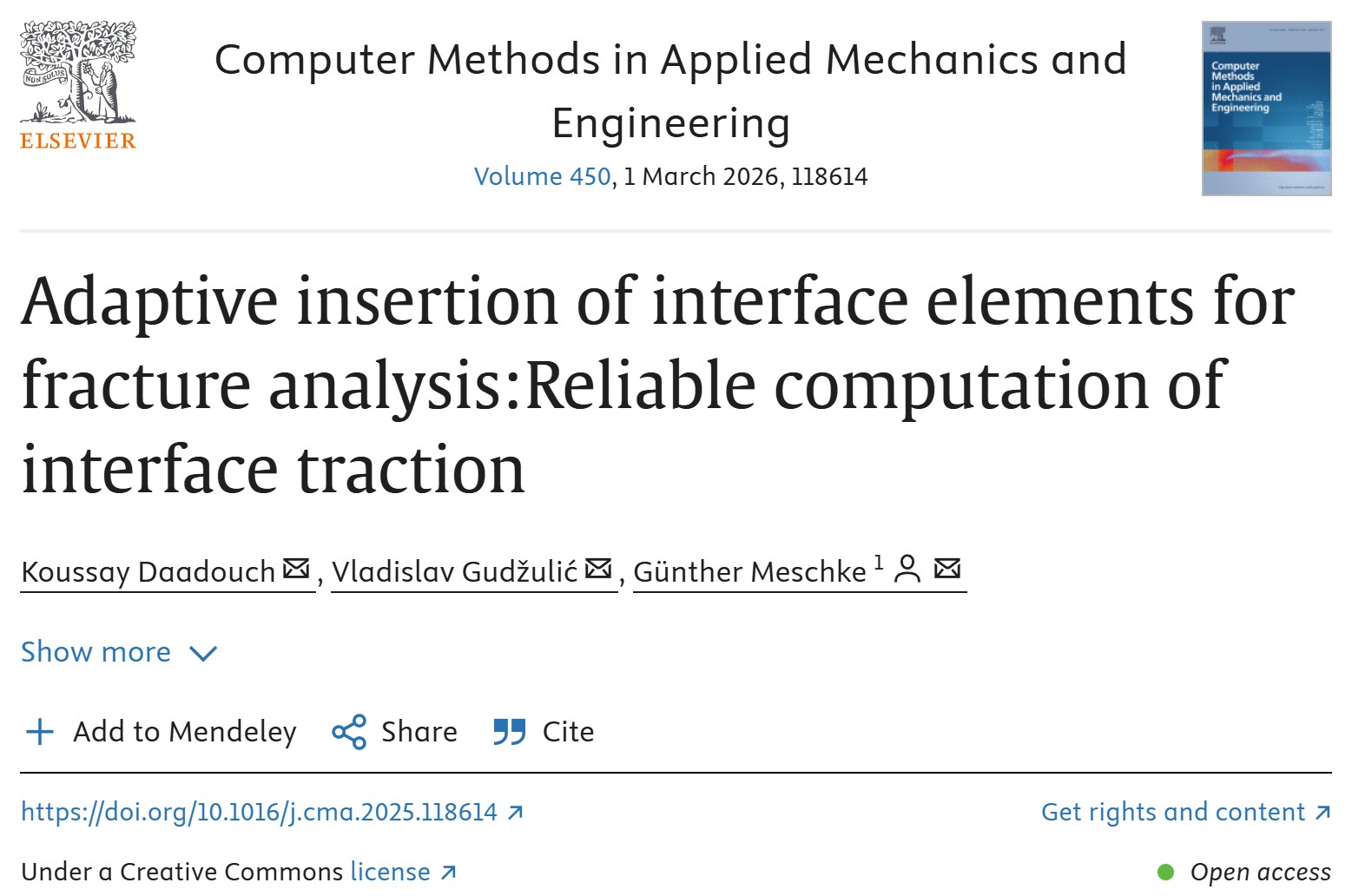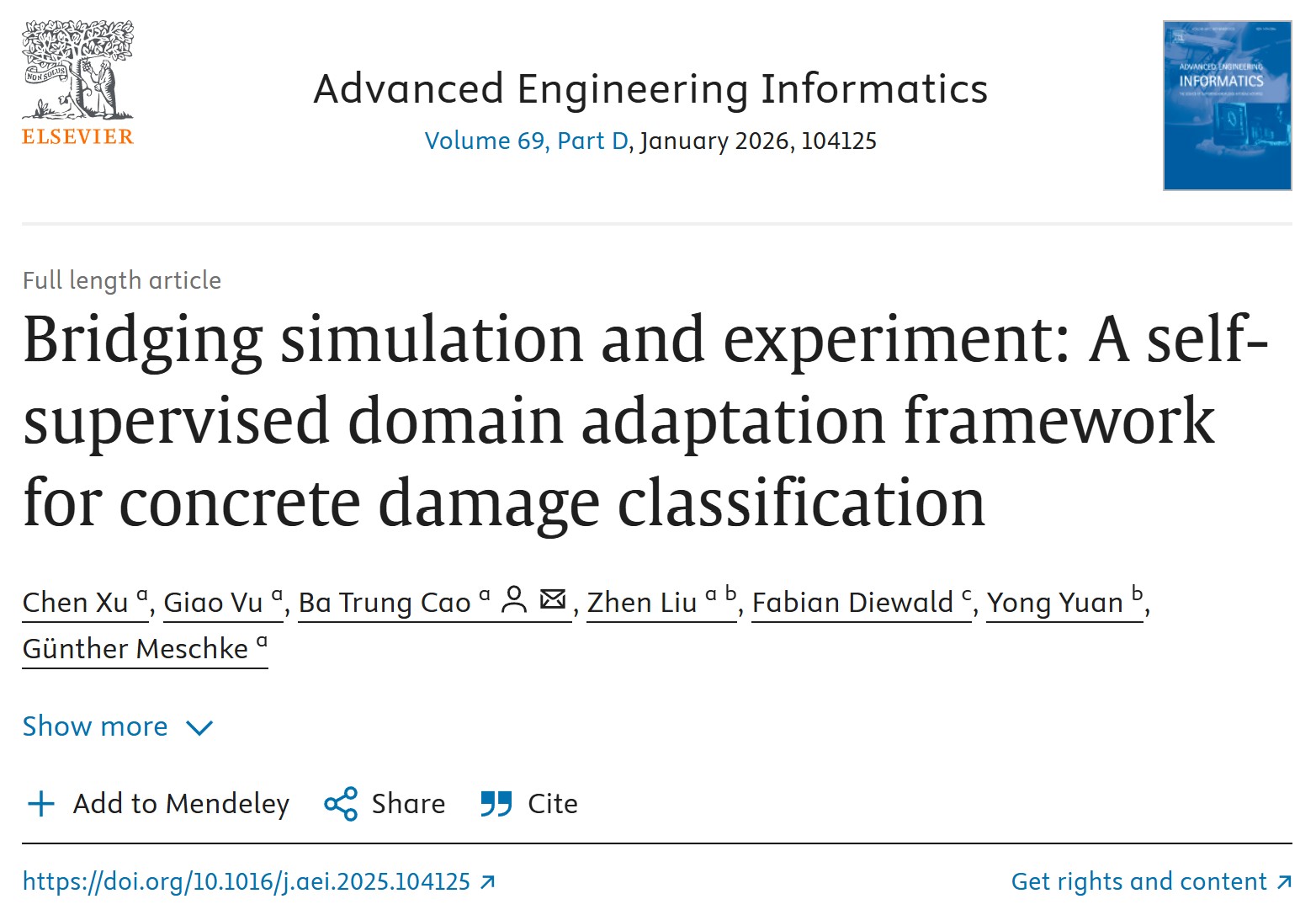
18.07.2014
Our eyes are composed of living tissues, which are constantly remodeling in response to mechanical, chemical, and visual stimuli. In particular, the loadbearing collagenous structures of the eye can undergo substantial growth and remodeling during physiological and pathophysiological conditions. In my research, I seek to elucidate the biomechanical mechanisms that underlie growth and remodeling in ocular diseases such as myopia and keratoconus. The eye is a mechanical pressure vessel, and biomechanics of the eye are driven by intraocular pressure, orbital pressure, cerebrospinal fluid pressure and the reaction of the load-bearing tissues to those pressures. Remodeling is thought to play an important role in these ocular diseases but little is known about the underlying mechanisms, as quantitative methods are lacking to image and measure remodeling connective tissues. Computational multi-scale simulations present an alternative method to gain insight into the the remodeling mechanism underlying myopia and keratoconus. Continuous turnover (degradation and synthesis) of collagen has been proposed as the key mechanism underlying collagen remodeling in soft tissues. Given enough time, collagen turnover may indeed lead to substantial tissue remodeling. However, in the last decade, several findings have shown that substantial collagen remodeling occurs in a much shorter time frame than has been previously appreciated, which suggests an alternative mechanism: collagen sliding. In this lecture, computational multi-scale simulations are used to assess collagen sliding as a potential mechanism in myopia and keratoconus.
Gastvortag_Grytz.pdf

"Adaptive insertion of interface elements for fracture analysis: Reliable computation of interface t
more...
Chen Xu, Giao Vu, Ba Trung Cao, Zhen Liu, Fabian Diewald, Yong Yuan, and Günther Meschke are the au
more...